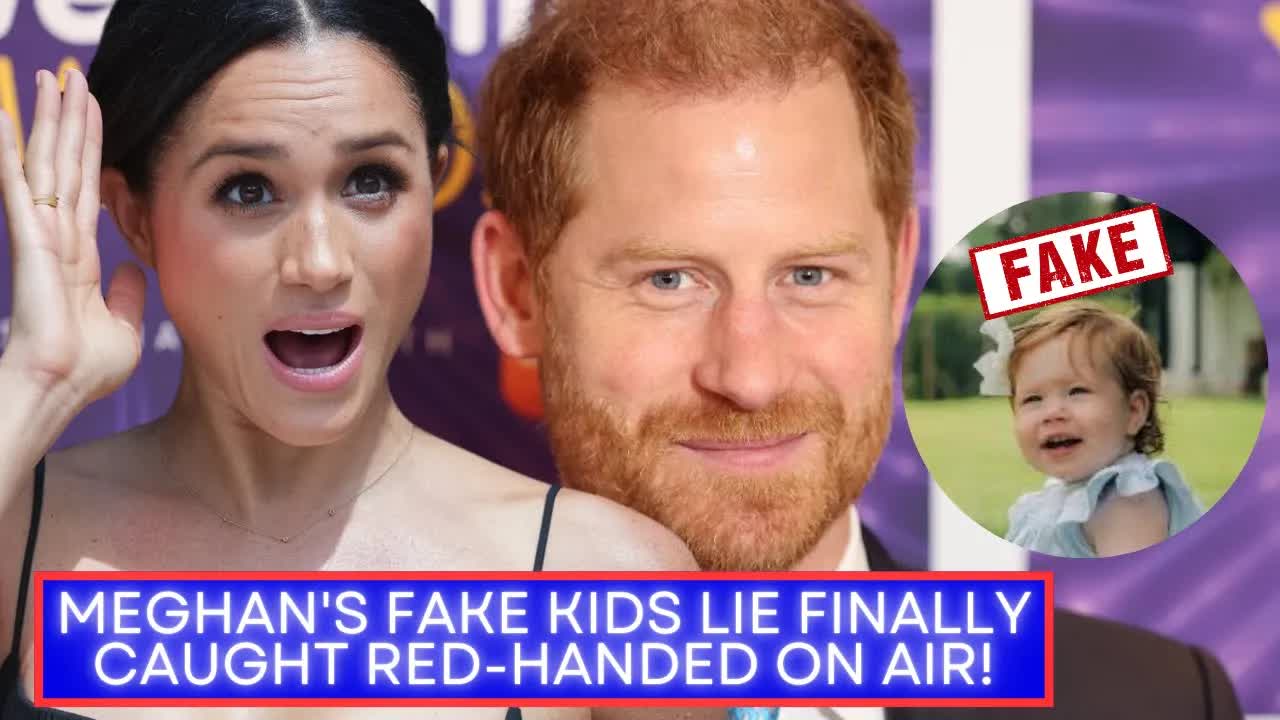In the latest chapter of the ever-evolving saga surrounding Prince Harry and Meghan Markle, the prince has once again taken center stage.
Recently, he attended the WellChild Awards in the UK, a notable event that had many wondering where his wife Meghan and their children were.
While Harry mingled with inspirational children facing real-life challenges, he couldn’t resist sharing a personal tidbit about his daughter, Lilibet, and her comfort toys.
This revelation, while seemingly innocuous, has ignited a wave of discussion about the couple’s ongoing media strategy.
Harry’s choice to mention Lilibet’s affection for her “loveys” raises eyebrows.
The term is distinctly American, perhaps reflecting his California lifestyle.
It’s interesting to note how the prince has adapted his language since moving across the pond.
However, this small detail, touted as a significant reveal by the media, feels more like a calculated PR maneuver than genuine sharing.
It seems Harry has mastered the art of weaving family narratives into his public appearances while keeping the actual family largely out of sight.
The timing of Harry’s comments is also suspect.
With Meghan back in California and the children presumably elsewhere, one can’t help but wonder if this was a strategic move to remind the public of his family ties while he was in the UK.
It’s as if he’s saying, “Don’t forget about us!” But amidst this family showcase, pressing issues remain unaddressed.
The rift with his family, allegations of staff bullying, and his royal title hang in the balance while Harry opts to share anecdotes about toddler toys.
While Harry engages in this light-hearted banter, his brother, Prince William, and sister-in-law, Kate Middleton, are busy fulfilling royal duties.
They continue to represent the monarchy with poise and commitment, focusing on meaningful causes rather than personal narratives.
It’s a stark contrast to Harry’s recent approach, which feels more like a desperate attempt to cling to relevance than a sincere connection with the public.
The question arises: is Harry genuinely trying to relate to other parents, or is this merely part of a broader strategy?
In the face of mounting scrutiny regarding their Netflix deal and rumored troubles in paradise, could this be an effort to humanize themselves?
After all, the Sussexes have faced a barrage of negative press lately, and perhaps sharing relatable parenting moments is their way of counteracting that narrative.
Yet, the notion of “normal” parenting doesn’t quite apply here.
Normal parents don’t strategize about releasing details of their children’s lives for media attention.
They don’t hide their kids away while simultaneously using them as pawns in a publicity game.
Archie and Lilibet, the most famous invisible children, are frequently mentioned but rarely seen, creating a peculiar dynamic that contrasts sharply with how William and Kate manage their children’s public presence.
William and Kate strike a balance between privacy and public interest, sharing select moments without exploiting their children for headlines.
In contrast, Harry and Meghan appear to want it both ways—seeking public engagement when it suits them while decrying media interest when it doesn’t.
This duality is becoming increasingly tiresome, and the constant drip-feed of information only serves to keep the public guessing without satisfying their curiosity.
Moreover, as Harry shares stories about Lilibet’s toys, one cannot ignore the elephant in the room: his estrangement from his family.
How is it that a prince feels more comfortable discussing stuffed animals than addressing his relationship with King Charles or Prince William?
This shift in focus is disheartening, highlighting a troubling trend where personal anecdotes overshadow significant familial issues.
Adding fuel to the fire, Harry’s solo trip without Meghan raises questions about their relationship.
Could this be a sign of discord, or is it simply another strategic move in their ongoing media chess game?
Regardless, it reinforces the idea that the Sussexes thrive on speculation, keeping the public engaged while avoiding deeper revelations about their lives.
In dissecting Harry’s comments about Lilibet, we find ourselves questioning the very essence of their public persona.
What was once a story of duty and service has morphed into a narrative driven by social media and public relations.
The couple’s approach to privacy and publicity seems increasingly contradictory, leaving many to wonder where their true intentions lie.
Ultimately, this endless cycle of speculation and analysis reveals more about the Sussexes’ current state than any heartfelt disclosure.
If Harry and Meghan genuinely desire privacy, they should embrace it.
Conversely, if they wish to remain public figures, they must accept the consequences of that choice.
The ongoing ambiguity is not just tiresome; it also undermines the dignity associated with their royal titles.
As the drama unfolds, one thing is clear: the Sussex saga is far from over.
With every carefully crafted revelation, Harry and Meghan keep the public engaged, ensuring that their lives remain a topic of conversation.
Yet, the cost of this constant scrutiny may be higher than they realize, affecting their relationships and sense of self in the process.
The world watches, intrigued but increasingly weary of the same old story.

